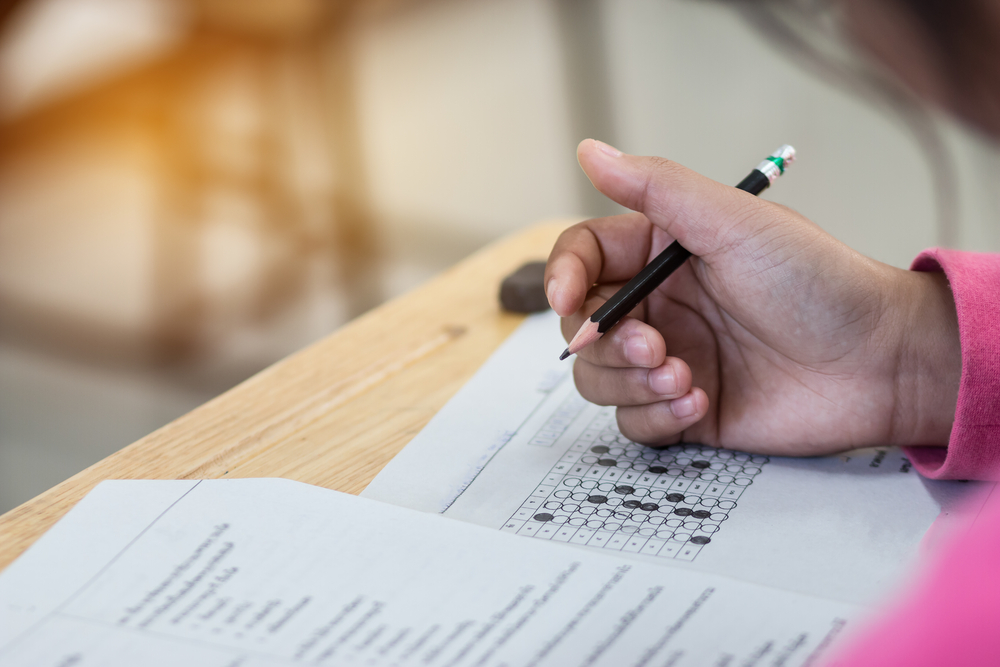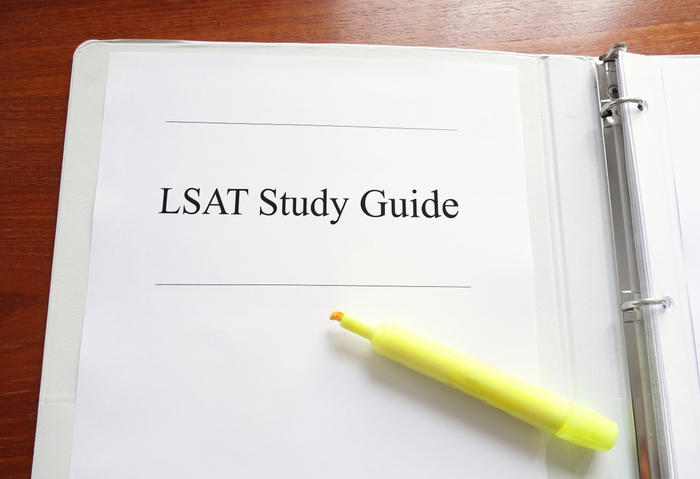The LSAT is one of the most challenging entrance exams to study for because all six of the sections require critical thinking and strategy rather than memorizing facts, formulas, and definitions. Due to its tight time constraints and difficult texts, the reading comprehension section is just as tricky as the rest of the test, and it can be hard to develop an effective study plan.
In this short guide, we'll give you research-based strategies for studying effectively and some test day tips to help you ace the LSAT reading comprehension section.
What to Expect on the LSAT Reading Comprehension Section
This section of the test will be made up of four reading passages, each in a different subject area. The subject areas included are:
- Humanities
- Science
- Law
- History
For each reading passage, you will have to answer 6-8 questions.
You will have a total of 35 minutes to read the four passages and answer the questions about them. That works about to about 8-9 minutes per passage, for both reading and answering the questions. The passages are usually between 400 and 500 words, although one of the four subject areas will be composed of two related passages of about 200 words.
How to Study for the LSAT Reading Comprehension Section
Studying for reading comprehension is not a straightforward process. You can't just memorize and restate your knowledge on test day. Your study sessions for this portion of the LSAT will mostly be about developing the right background knowledge, skills, and strategies to do well. Here's a breakdown of how you should spend your study time:
Train Your Reading Skills to the Test
LSAT passages are not random. They all follow a relatively fixed structure. Some key characteristics include:
- 3-4 paragraphs in length
- Each paragraph typically focuses on a single central idea
- A central idea that is expanded on with a couple of supporting claims, opinions, or facts
The Study Method
Knowing that all passages have a similar structure, plot it out in the margins or on scrap paper as you read. For each paragraph, write down the central idea. Then, add the supporting claims or other details. Just jot down key phrases and terms. You don't need to write out full sentences.
When you've finished plotting out this outline of the passage, connect the dots.
- What was the general argument the author was making with this collection of central ideas?
- What topic were they illuminating or what opinion were they expressing?
- What was the point of giving you those 3-4 central ideas? How do they work together to create a larger, common theme?
Now, close the book or laptop and create a cohesive summary of your own based on the outline you've created, without referring to the text. This should not be detailed. Simply describe what the author's main point was, what central ideas they used to make that point, and how they supported those central ideas.
If you run out of practice LSAT passages, you can do this same technique on anything. Do it with news articles, book excerpts, papers you're reading for class, textbook passages, anything you can. Understanding the mechanics of a text will help you automatically synthesize the main themes when the time comes.
Work on Your Timing
As mentioned earlier, you have roughly 8-9 minutes to read a passage and answer 6-8 questions on each one. As with all LSAT sections, time management is key to do well. The goal is to be able to read through and comprehend the full passage in under four minutes. The closer you can get to three minutes, the better. This leaves you with 4-5 minutes for the questions and to refer back to the passage.
After you've gotten in the habit of parsing the passage to create an outline and summary as described in the training method above, it's time to start working on speed. Here are some steps to do that:
- Select a page or article of about 3-4 solid paragraphs (around 300-400 words total).
- Time yourself while reading and outlining it according to the training method discussed earlier. Don't be concerned about how long it takes. You just want to get a base measure for now to find out where you're at.
- Once you have a base measure, you know how far you are from the target of 3-4 minutes per passage.
- Begin timing yourself each time you study and work on reading and outlining faster. The more you practice, the easier it will be to go faster without sacrificing comprehension.
Ideally, you'll have your pacing down before you take the test, but if you're consistently closing in on the time limit, work on reading the last section in under five minutes, answering the easiest questions (generally the 'detail' ones), and then the larger 'theme' questions. This way you'll be able to at least complete the section, as guesses aren't penalized. Fill out every last bubble, as a guess still gives you a decent chance of being correct.
Develop Background Knowledge
In a perfect world, you might not need any background information on the passages. All of the questions you're going to be asked will be based specifically on that singular passage. As long as you understand the internal logic of that specific passage, you've got all the information you need to answer every single question correctly.
Where this strategy goes slightly awry is in ignoring the benefit of already having some background knowledge of the subject. Multiple studies, including the famous baseball experiment, have shown that reading comprehension scores are heavily influenced by the amount of background knowledge the test taker had on the subject of the reading passage.
If you know nothing about physics, reading four paragraphs about the methods of gluon exchange between quarks is going to feel like reading an alien spaceship manual.
If, however, you have read a bit about physics, it'll be easier to find your bearings. This means you'll more quickly grasp the key arguments of the passage because you won't waste time just trying to familiarize yourself with the language and subject matter. It's also just a lot easier to retain information if your brain already has a foundation of knowledge for understanding it.
So no, you will not need any outside information to answer questions. However, you do need prior knowledge in order to more effectively comprehend what you're reading. Given that this is a reading comprehension test, that's useful.
The Study Method
While you spend the next few months cramming for the LSAT, also take some time to read widely on a ton of different subjects. If there was ever a time to get lost in a Wikipedia wormhole, this is it.
If this sounds too open-ended to be a study method, apply some structure to it.
A recent study about the effects of background knowledge on reading comprehension identified a 59% threshold. If you know at least 59% of the terms in the text, you can effectively comprehend that text.
You will have four passages in the reading comprehension section, one in each of the following general subject areas: law, history, humanities, and science.
Here's the method:
- Rank those subjects in order of most knowledgeable to least knowledgeable.
- If any of them are your expertise, skip them. For example, if you majored in history, it's safe to say you've already met the 59% threshold on that subject area.
- Focus the bulk of your background knowledge development on the subjects you're least knowledgeable in.
- Don't try to become an expert in everything. Instead, try to become familiar with the vocabulary, the fundamental concepts, and the unique writing conventions employed in each field. Practice tests are your friend here.
- For added benefit, use the skills training technique described in the next section on the texts you read for background knowledge.
Here's an example schedule:
Say you've budgeted 5 hours a week to developing your background knowledge.
Devote 2.5 of those hours to your least confident subject area.
Split the remaining five between the rest, skipping any that you feel confident you've met the threshold in already.
What Should You Read?
The best place to start is with general Wikipedia articles and introductory textbooks about major fields of study. In science, for example, you might read introductory texts on physics, biology, and chemistry. For law, you might read introductory texts on corporate law, criminal law, and legal theory.
Test Day Tips

Preparation and study are key, but you also need to have some test day strategies in place to make sure you're managing your time well and working through the reading comprehension section as efficiently as possible. Here are some of the best strategies you can use to do that:
Do the Passages You Know First
Don't be afraid to skip around the reading comprehension section. Quickly run through each of the four passages. Mentally rank them in order of your personal confidence level. Go through the ones that seem easiest for you first, freeing up plenty of time for the trickier ones.
If possible, try to complete those in less than the 8-9 minutes you have so that you can have a little extra time for the harder ones.
Don't just base this decision on the subject area, though. You might be a budding historian, but the history passage might be written at a much more advanced level than the science passage. Take a few seconds to skim the passages and gauge the complexity of writing. The ones that look like they have the simplest writing style should be near the top of your list.
Use Scrap Paper
If you used the training method described above, you've built up a strong habit of jotting down a quick outline of the passage's main ideas and supporting ideas. Do this on test day.
Note the paragraph number next to the central idea. This way, if you do need to go back to the passage to answer a question, you immediately know which paragraph contains the relevant information.
In addition to your outline, you might want to note dates or specific percentages or quantities. These are just useful to have as a reference, so you don't have to go back to the passage to find the data.
This can cut the search time down from 30 seconds to 4-5 seconds. For some questions, it can even eliminate the need to go back to the passage at all.
Given that you only have about 40-50 seconds to spend on each question, you can't really afford to spend 30 of them just trying to skim through the passage to find the information.
Use This Answering Process
After reading through the passage, this should be your general approach to getting through the 6-8 questions about it:
- Answer questions that refer to a specific detail first. These are questions that refer to specific lines of the passage. They tend to be easier to answer because you know exactly where to look.
- Answer questions that don't refer to a specific detail next. To the best of your ability, answer these without going back to the text.
- If you are able to answer with confidence without going back to the text, great. Listen to your gut and move on.
- If you don't feel confident about your answer, go back to the appropriate section. If you've outlined the passage on scrap paper, this should be easy to do.
- If, after referring back to the relevant section, you still don't feel confident, make a guess using the guessing techniques below. Flag the question and move on.
- Use any leftover time to go back over your flagged questions.
Answer the Questions You Know First
For each passage, answer the questions you know first. If you encounter a question where the correct answer isn't immediately clear to you after reading through the options, skip it and go to the next one.
Once you've gotten the easy ones done, use the remainder of your 8-9 minutes to answer the tricky ones. Don't go over your time limit, though. If the time allotted is almost up, just guess using the guessing techniques below. Then, flag it and move on.
If you still have time left after finishing all four passages, you can use it to go through some of your flagged questions to try and choose the right answer.
Don't Let Outside Information Sway You
We spent a lot of time talking about how valuable background knowledge is earlier. So, this tip might feel a little contradictory. However, that background knowledge is only meant to improve your reading comprehension.
You don't want it to influence your actual answer choices. Remember, these questions aren't testing how much you know about quarks and gluons. They're testing how effectively you interpreted what the passage you just read was saying about them. This means one thing: use details provided on the test instead of your personal knowledge.
This gets especially tricky with more open-ended subjects where differing opinions are possible or on inference questions. Make sure that the answers you're choosing are based on specific parts of what you just read. If you can't pinpoint what part of the passage leads you to choose this answer, flag the question and make sure you're not being swayed by your personal biases.
Check the Specifics on Similar Answers
One common trap is to include two options that sound almost exactly the same. Only one of these can be correct, but it's not immediately obvious what the difference between them is.
If you encounter a question where two or more answers sound plausibly correct, go back to the question and break it down. What is it asking specifically?
Is it asking what the actual cause of glaciers melting is, or is it asking you what Mr. Johnson from the passage believes the cause of glaciers melting is? Is it asking which statement is correct or which one is incorrect?
If you still find yourself struggling between two answers, breakdown the contrasts between the two similar answers to figure out what specifically differentiates them from each other. These subtle differences should give you clues as to which one actually answers what the question is asking.
If you're running out of time, just go with your gut. It's better to guess and move on than to take away precious seconds from the next set of questions.
Use These Last-Resort Guessing Techniques
If the clock is ticking and you just can't figure out a question, it's time to put in an answer, flag it, and move on. Even if you're plain guessing, you can use a little bit of strategy to avoid just sheer random selection. Here are two techniques:
Eliminate the Obviously Wrong Answers
Even if you don't know the right answer, you might at least be able to tell that one or two options are definitely wrong.
If you've got four options, the odds of guessing right are 25%. If you can eliminate one for sure, you've lowered it to three options. The odds of guessing right are now 33%. If you can get it down to two, your odds are 50%.
Pick the Less Extreme Options
The correct answers for reading questions typically use 'middle-ground' language, not explicitly stating something. The answers with the most nuance are typically the hardest to deduce, and thus are often the most likely to be correct. Find the most nuanced answer and guess that if you're butting up the time limit. As a last resort after that, guess randomly. There is no penalty for guessing or for wrong answers on the LSAT
Good Luck!
If you put in the work, understand the test, and prepare sufficiently, you can raise your LSAT score by about 11 points by studying over a six month period. Just as with all things, the best bang for your buck comes from strategical thinking, persistence, and effort. LSAT prep isn't easy, but at the end of the day, it can be rewarding by helping you get into the law school of your dreams.










